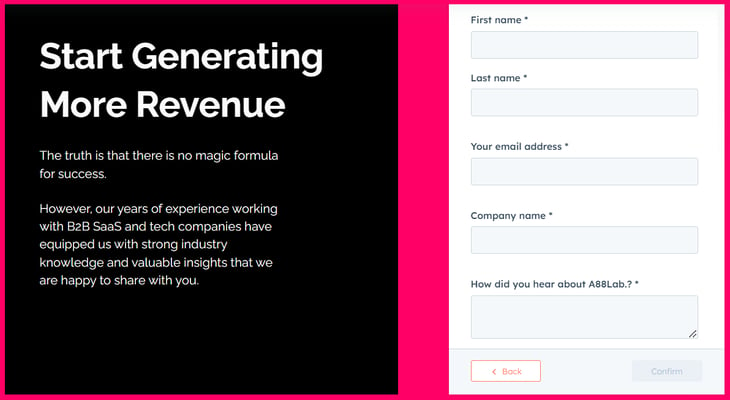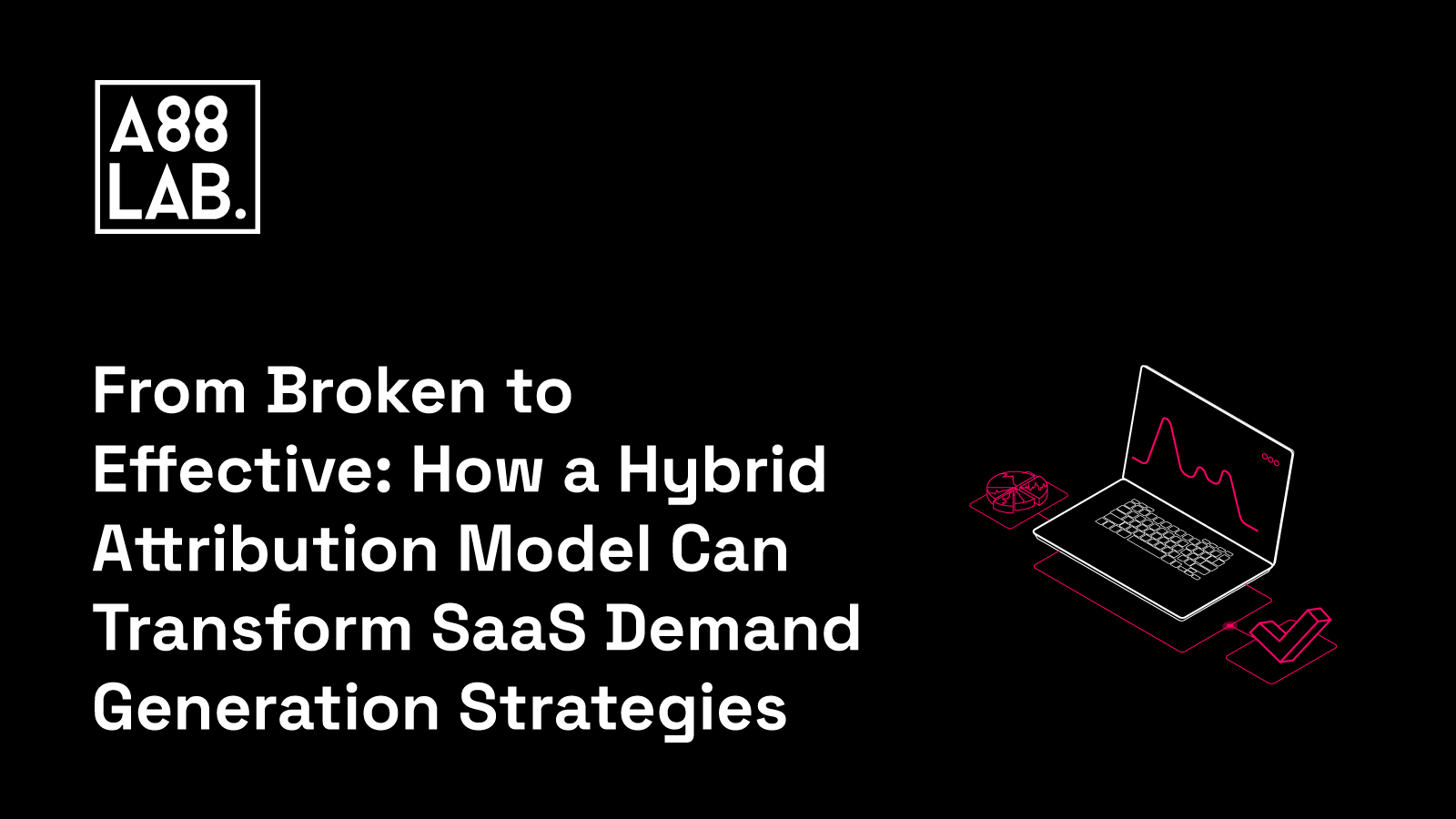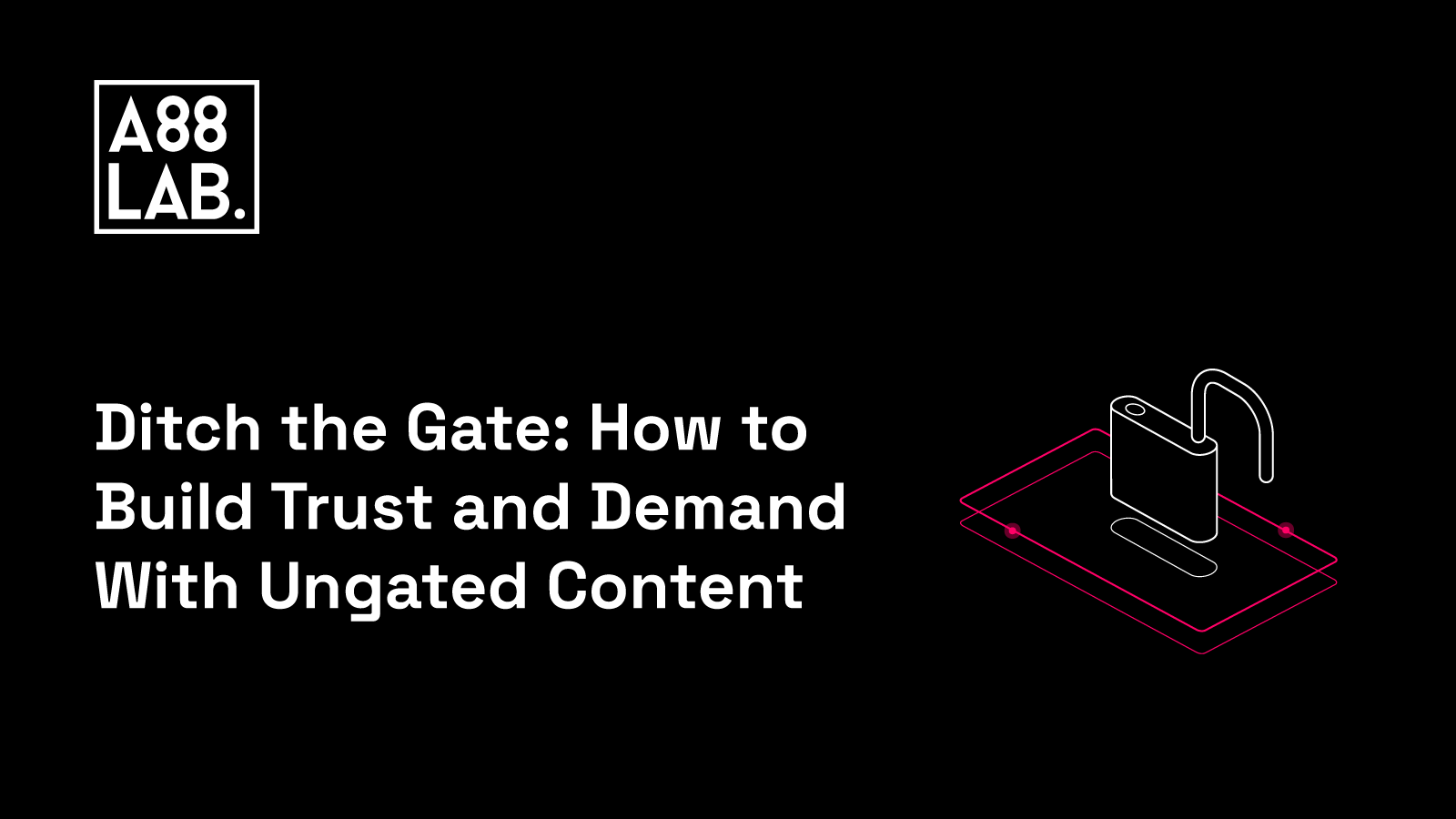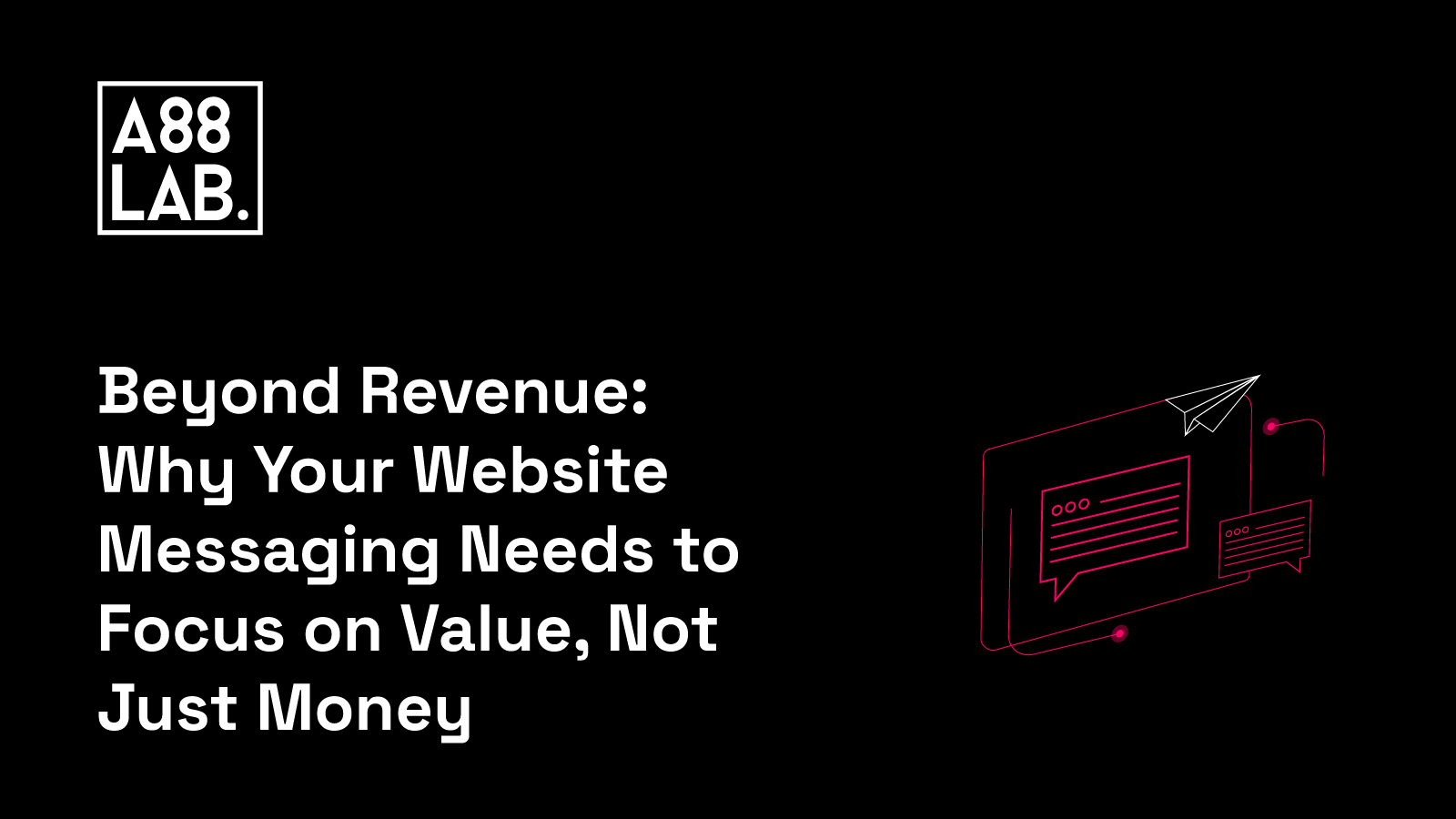Revenue attribution is a critical challenge faced by many SaaS companies today. Despite having exceptional products, companies struggle to measure the effectiveness of their marketing efforts and determine which channels drive the most revenue. As a result, they invest in multiple marketing programs but find it difficult to measure which channels justify the ROI in terms of generated revenue.
This challenge is particularly pressing for CROs and CMOs in the B2B SaaS world, who must maximize their limited resources and are often forced to double down on a few channels that have shown success. With their only point of reference being the attribution software that is based on traffic sources like direct traffic, organic search, organic social, referrals, etc., CMOs, and CROs often get misleading results that fail to provide enough insights to accurately measure the impact of different channels.
To complicate matters further, traditional attribution models often overlook offline channels and the channels that create demand in the first place.
For instance, if a friend mentions a company to you and you visit the website directly or search on Google, the traffic will be recorded as direct or organic search, although it was actually a result of word-of-mouth.
To address this problem, SaaS companies can adopt a hybrid attribution model to transform their demand generation programs. In this article, we will explore the challenges of traditional revenue attribution models and how they fall short of accurately measuring the impact of offline channels and the channels that create demand in the first place. We will also dive into how a hybrid attribution model can help you better understand the full customer journey and create more cost-efficient demand-generation programs.
The Hybrid Attribution Model
A hybrid attribution model is a powerful approach that can address most of the limitations of traditional attribution. It combines traditional models, such as first-touch and last-touch, with multi-touch and self-reported attribution models to create an accurate picture of customer journeys. It assigns credit to all touchpoints based on their contribution to each conversion while also considering customers' lifetime value.
Using a combination of self-reported and software-based attribution, the hybrid attribution model provides a more holistic picture of customer journeys and helps marketers make better decisions about their demand generation programs. By self-reported attribution, we mean asking customers which channels brought them to us. This is especially important for channels not well-tracked by software-based attribution models, such as offline channels like events, conferences, communities, groups, word of mouth (WOM), etc.
For example, a user might see an ad on Linkedin, search for the company on Google, and then attend a conference where they hear an in-depth presentation about the product and decide to book a demo. In this case, the Linkedin ad and Google search channels should get credit for their sales contribution.
The hybrid attribution model starts with a baseline measurement, such as last-touch or multi-touch. This baseline measurement is then adjusted to account for self-reported data. For example, if a user clicks on an ad but reports that they heard about the product from a friend, then the credit for the conversion is split between the ad and their friend. This allows marketers to get an accurate view of how each channel contributes to conversions and customer lifetime value.
Another example of hybrid attribution in practice is the use of attribution "lookback windows." This means a channel can get credit for conversions even if they happened outside the traditional window (e.g., two weeks). This is especially helpful for long-term campaigns, such as brand awareness efforts, where the impact of a channel may not be seen until much later.
Implementing a Hybrid Attribution Model in SaaS Demand Generation Programs
Now that we've covered the basics of a hybrid attribution model, you're probably wondering how to implement it in your own SaaS demand generation efforts. The first step is deciding which channels to track and measure. This includes both digital (e.g., email, paid search, social media, etc.) and offline channels (e.g., conferences, events, groups, communities, WOM, etc.).
You should also determine which attribution model to use (e.g., last-touch, multi-touch, etc.) and which self-reported data to collect. Using these two separate measurement methods in tandem will help you accurately measure the impact of both demand creation and demand capture programs.
Once you have chosen your channels, model, and self-reported data to track, it's time to start collecting data. To do so, you should identify the most relevant metrics for your SaaS demand generation program, such as conversions, engagement, lead quality, or customer retention. The goal is to get a holistic view of the customer journey so you can accurately measure the impact of each channel.
Collecting data using self-reported attribution is a bit trickier, but it can be done by asking customers to fill out surveys and forms, listening, and participating in sales calls, interviews, etc. These surveys should include questions about what prompted the customer to choose your brand over competitors, which channels they interacted with, and additional relevant information. With self-reported attribution, you get almost immediate insights into what demand-creation programs impact your buyers.
One effective way to gather this information is by asking the question, "How did you hear about us?" on forms and surveys. Including it on your website will provide valuable insights into how customers are discovering your brand. However, it's important to keep in mind that providing a list of options in a drop-down menu may limit the customer's response and potentially bias their answer. Making this question an open field allows the customer to provide a more detailed and personalized response. This will help you gather accurate information and better understand the channels that are driving the most engagement and conversions.
Additionally, information gathered from the "How did you hear about us?" question can also improve your marketing strategy by highlighting areas where you may need to focus more resources or adjust your approach. For example, if you notice that a significant number of customers are discovering your brand through social media, you may want to consider increasing your social media presence or investing in social media advertising.

Once you have collected enough data, it's time to start analyzing it. It's essential to look at both software-based and self-reported attribution data side by side. For B2B SaaS clients with complex sales cycles, additional metrics to consider may include the number of touchpoints in the customer journey, the length of the sales cycle, the role of different marketing channels in each stage of the funnel, and the impact of lead nurturing activities.
By analyzing software-based and self-reported attribution data, you can get a more accurate picture of which channels drive the most conversions. This will allow you to adjust your demand generation strategies to focus on the channels delivering the highest ROI.
At the end of the day, a hybrid attribution model aims to help you make better decisions about where to invest your marketing budget. With a mix of data-driven insights and customer feedback, you can ensure that every dollar spent on demand generation is an investment in your company's growth.
But, What Is Revenue Attribution, and Why Is It Important?
Revenue attribution is nothing but a process of assigning credit to different touchpoints or channels that contribute to a sale. It’s an essential part of understanding how your marketing efforts are performing and where you should be investing resources to increase revenue. Without accurate attribution, it is difficult for CMOs and CROs to assess the ROI of their marketing initiatives and the effectiveness of their strategies.
In recent years, revenue attribution turned into a hot topic in the B2B SaaS world.
The rise of SaaS companies has brought another unique challenge: how to measure the impact of offline channels and the channels that create demand in the first place?
Due to complex buying cycles with multiple touchpoints and decision-makers, SaaS companies often struggle to accurately measure the full customer journey and identify which channels drive the most conversions and how each contributes to the bottom line.
After all, whether you're on a tight budget or have plenty of cash to spend, you want to make sure you're putting your money in the right place and getting the most bang for your buck.
And that's exactly where traditional revenue attribution models fall short.
The Limitations of Traditional Revenue Attribution Models
Demand Capture vs. Demand Creation
One of the limitations of today's revenue attribution system is its focus on demand capture alone while ignoring demand creation. Demand capture refers to the channels and tactics that attract users who are already in-market to buy your products or services, such as SEO, paid social, email marketing, and LinkedIn outreach.
To put it more simply, most revenue attribution systems tend to focus on typical lead generation channels. While it's important to measure the effectiveness of these channels, attributing revenue solely to demand capture ignores what created the demand in the first place.
The important question to consider when measuring revenue attribution is: how did people really hear about you? For example, a user who lands on your website organically or through a direct link may have heard about you elsewhere, like a social media post or a podcast appearance. A traditional revenue attribution system would not take these "offline" channels into account, resulting in inaccurate data and potentially flawed decisions.
Inaccurate Measurement of Touchpoints
Another limitation of traditional attribution models is the lack of accuracy in measuring the impact of different touchpoints, especially in SaaS companies with complex sales cycles. The first-touch and last-touch attribution models are popular among marketers, but they ignore the impact of intermediate channels.
For instance, a user may first land on your site through organic search, then see a paid ad, and later visit your website again through a referral link or social media. Over time, they may engage with your content, attend webinars, and participate in demos before finally becoming a customer.
Under the traditional first-touch model, all the credit would go to organic search. Using a last-touch model, all of the glory might go to an email or social media post. Neither model considers the entire customer journey and how each touchpoint contributed to the sale.
Unfair Multi-Touch Attribution Models
While using multi-touch attribution may solve the problem of inaccurate measurement of touchpoints, it can also be a double-edged sword. The multi-touch attribution model assigns credit to multiple channels based on certain weights and rules, but what if the model is biased in favor of some channels?
Let's try to explain it using an example:
Assume that you're running a marketing campaign and you've decided to assign weights of 10%, 25%, 30%, and 35% to organic search, paid search, email marketing, and direct traffic, respectively. After the campaign is complete, let's say that organic search has driven 45% of all conversions. Under this model, the organic search would get only 10% of the credit, even though it was responsible for almost half of the conversions. This makes revenue attribution complex and unfair.
Now, this is not to say that multi-touch attribution models are inherently flawed -- in fact, they can be incredibly useful if used correctly. However, marketers should always ensure that their model is properly configured and unbiased towards any channel before implementing it.
Ignoring the Lifetime Value of a Customer
Another limitation of traditional attribution models is that they only track and measure the immediate revenue from each channel. They fail to account for the lifetime value of each customer and how different channels contribute to it. A customer's lifetime value (CLTV), or the total revenue generated by a customer throughout their relationship with a company, is an important metric often overlooked by traditional attribution models.
CLTV tells a much bigger story than immediate revenue and can provide deeper insights into how customers interact with your product. For example, a user might click on a paid ad and immediately purchase. However, if this user continues to be engaged with your brand over time and makes additional purchases in the future, shouldn't the paid ad channel get credit for not only the immediate purchase but also future purchases?
Final Words
In the hybrid attribution model, you essentially take the best of both worlds to create an optimized measurement system tailored to your business. By combining software-based and self-reported attributions and implementing a hybrid attribution model in your SaaS demand generation programs, you can gain deeper insights into what's working and uncover potential opportunities for improvement.
Considering the number of channels that can't be tracked with traditional software-based attribution, hybrid attribution is an invaluable approach for understanding customer behavior and optimizing your marketing efforts.
So don't be afraid to try something new! A hybrid attribution model might be exactly what you need to optimize your SaaS demand generation programs and drive growth for your business.
.png)


